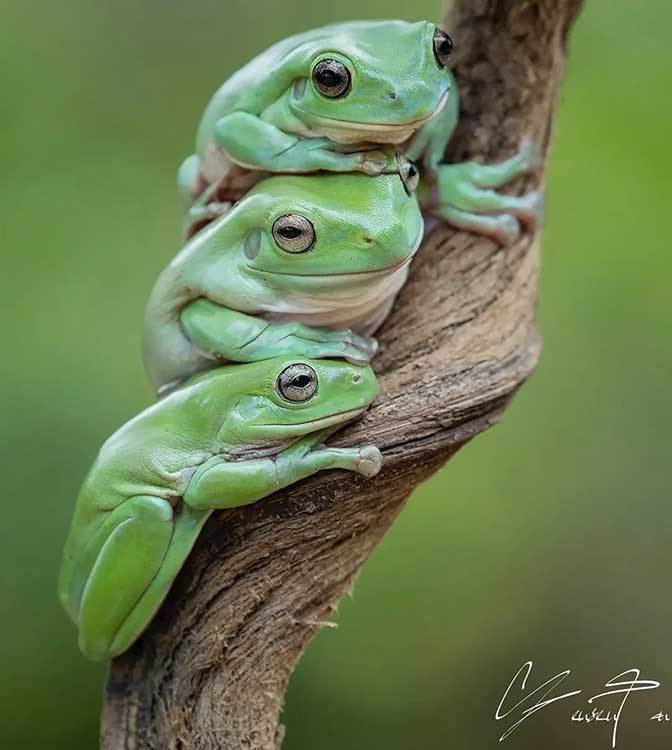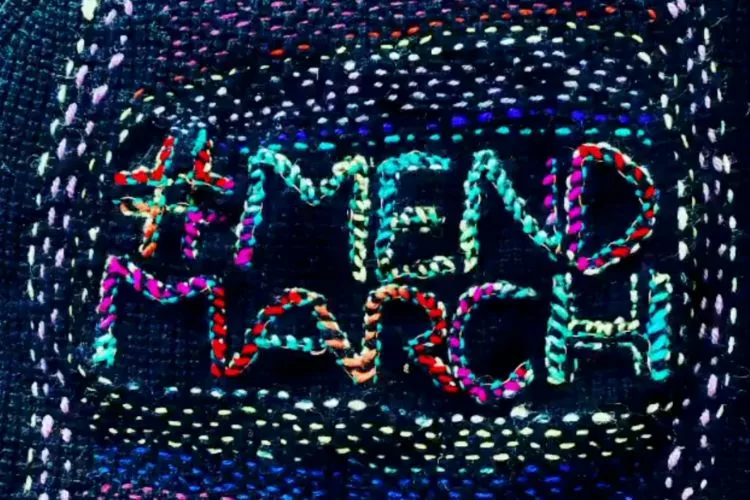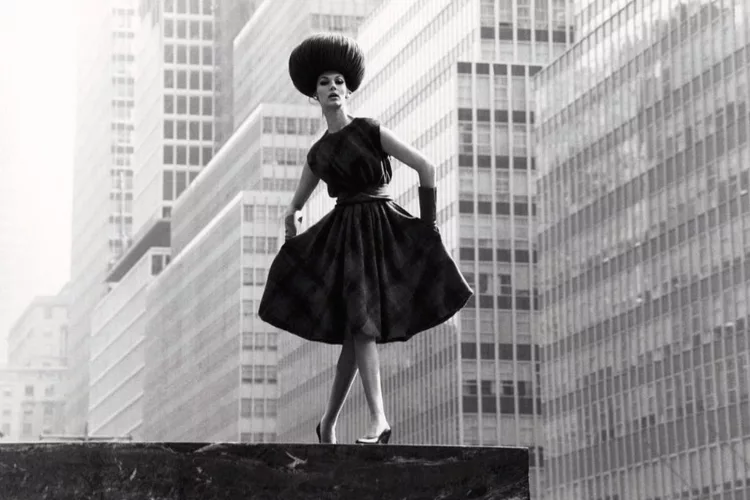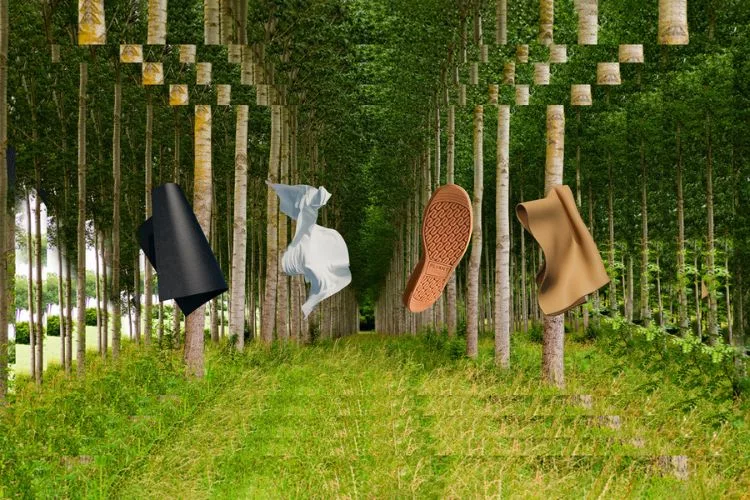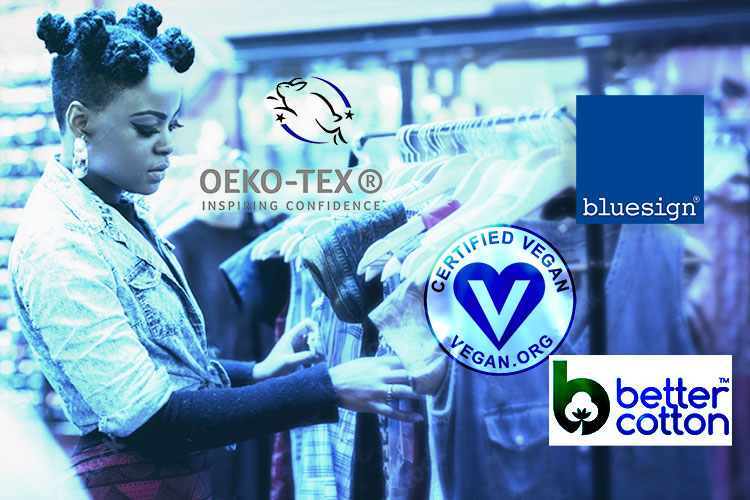Last week I had the pleasure of attending Fashion Act Now’s virtual conference, “A conversation on Imagining Alternative Futures: can commoning help fashion?” This conversation brought together experts David Bollier, Ana Maria Duran Calisto, and Dave Hakkens of One Army to consider new ways of operating as a society through commoning, which could help lower fashion’s impact on the planet.
If you’re feeling lost and wondering what exactly commoning is, don’t worry, I Googled it, too!
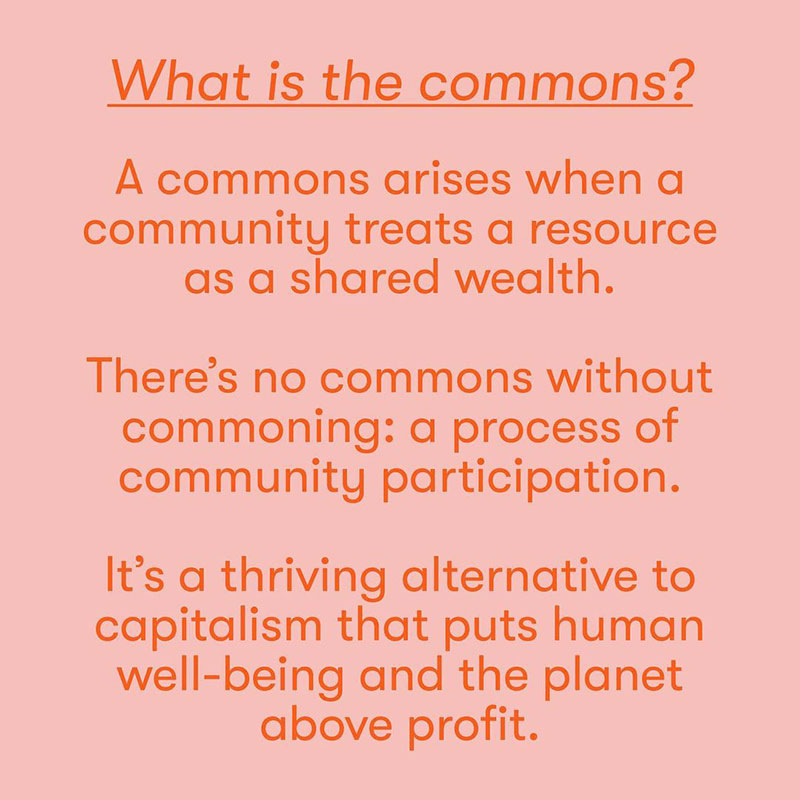
The intention isn’t to completely separate these commons from our current capitalistic systems, but to decrease dependence on the markets by creating connections between people in smaller, meaningful ways. In a commons operation, the community is in charge of its needs, avoiding producing just for profit, and sharing resources between members. David Bollier explained that we can currently see this manifested through resources like open-source software and community agriculture. But the commons is a social system and not just these resources alone. Maybe most importantly, commoning is built on the foundations of communities working together to solve problems. No one can create lasting, impactful change alone.
The practice of commoning in the U.S. dates all the way back to 1634, when the Boston Common was established. Townspeople chose to tax all households to purchase the land for the Common and use it for a variety of public activities like military training, recreation, and farming. The use of the Common has continued through today; it is used for recreational ball games and tennis, enjoyment of nature at the Frog Pond, and relaxation from the busy city. Most of the country, though, has moved away from commoning by privatizing the commons.
Commons privatization began from good intentions – believing that for resources to be properly cared for, they needed to belong to someone because people often take better care of things that they own. But privatization backfired when control of resources ended up in the hands of a few owners that are disconnected from daily life in the communities they should be supporting. David Bollier explained it this way:
If we don’t preemptively develop mechanisms of law or technology or social norms to protect the shared wealth we generate, you can be sure that capitalism will see that as free value to be monetized and capitalized.
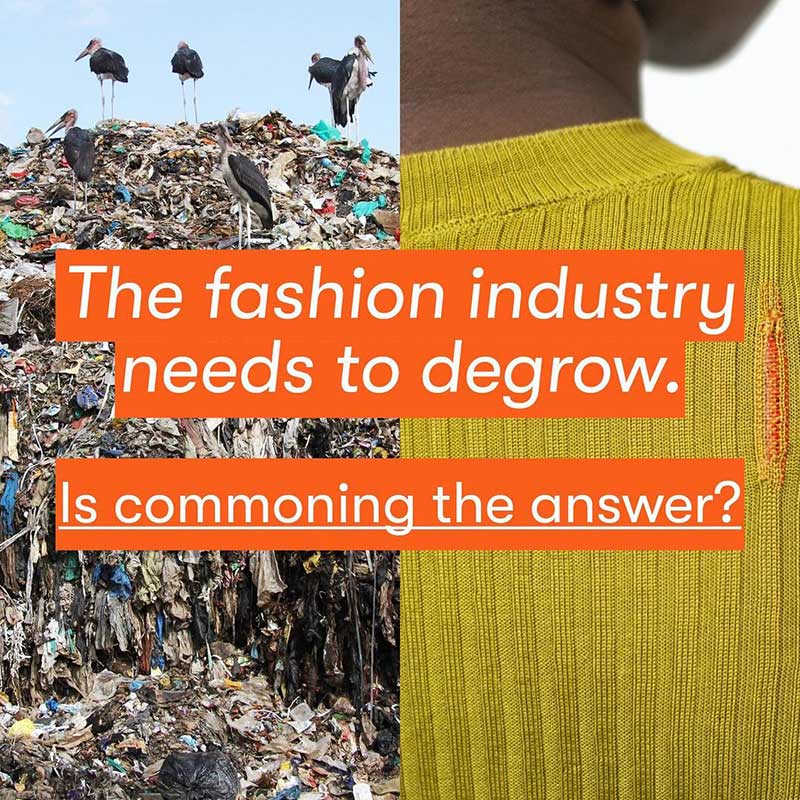
To apply the concept of de-privatized commoning to fashion we have to ask the question, what would it mean to have a spiritual or need-fulfilling fashion system separated from a primary goal of monetization?
First, it’s important to recognize that our current fashion system was built during a time of stability, which no longer exits. This current (and future) situation calls for new, radical ideas to help consumers value their clothing. To start, urban-environmental planner and architect Ana Maria Duran Calisto, voiced the need for a shift from the world of “mono” that’s been created. Now, society forces us to work and live in ways that are self-serving.
But fashion isn’t just about what we personally consume. The consumption of fashion comes from a complex system of making and selling that aims to assign standards of beauty and status through objects. Objects which are frequently manufactured and sold without consideration of their impact. On the planet or the people making them.
Our fashion system is centered around generating large profits that benefit solely those at the top. What’s needed is a shift from focusing on these very few people to a system that respects every being involved.
By focusing on the creative, abundant energy that’s manifested in nature, not only in humans but all organisms, and recognizing the need for group participation, we can begin to shift our thinking to become more community focused again. As Dave Hakkens of One Army explained, though, communities must focus on specific problems.
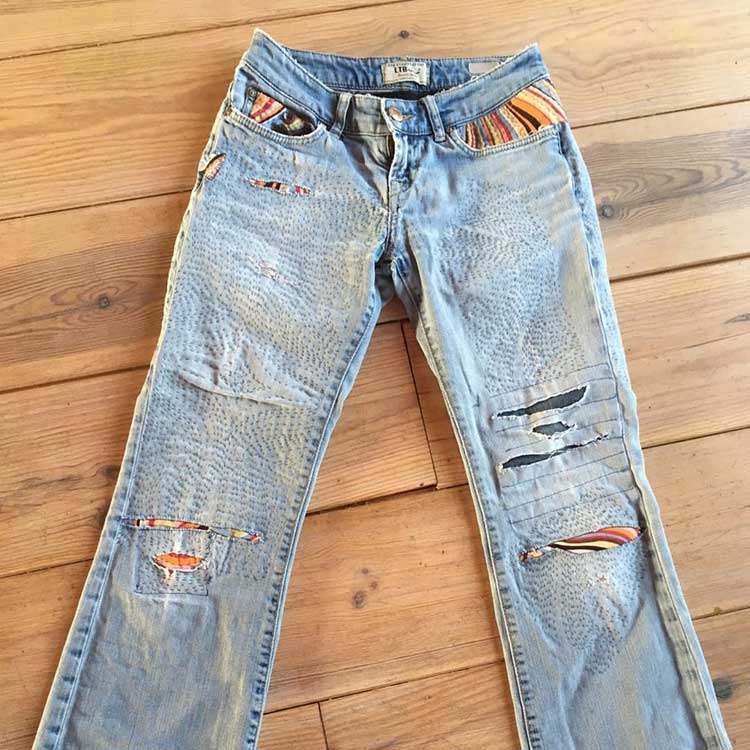
The group One Army comes from the idea of there are these massive problems in the world and you almost need an army to tackle those things because, on your own, you’re not going to change that. So, you need to have groups.
Dave Hakkens
img @inkeroordink via @fixingfashion.community
By breaking up problems to be solved by specialized groups, communities can work together to tackle individualized parts of global issues.
So, what would it really mean to bring commoning to fashion and instill a collaborative fashion system?
Participating in this conversation with Fashion Act Now left me with a few things to consider.
First is that fashion production should be localized and community based.
This would mean moving away from large factory productions and endless trendy styles and instead looking to clothing made by members of your own community with fabrics sourced in environmentally friendly ways. For things one commons may not be able to source, collaboration with other commons are possible.
Second is a need for a restructured economic system.
This part will undoubtedly be difficult. But for commoning to succeed, a way must be found to put less emphasis on creating to sell and more on creating for what we need.
And last, but arguably most importantly, we need to rework our relationships with nature, spirituality, ethics, the planet, and the future.
Creating fashion through commons requires a respect for all living beings and taking a step back to connect with all our planet provides and a step forward to care for its future.
It’s a society of nature in the sense that the social contract doesn’t involve only humans and well-being is not an aspiration only for humans. It involves all organisms and all spirits.
Ana Maria Duran Calisto
No matter what steps are taken first towards it’s important to remember, as shared by David Bollier, that without failing we don’t learn. Adapting commoning practices to fashion is an enormous undertaking that will require lots of trial and error. But by taking small, segmented steps towards change, legitimacy and trust will be built. And fashion may have a chance to develop much-needed connections to nature and the communities we create.
Learn more about Fashion Act Now and how you can get involved.
–Natalie LaBarbera
Related Articles
A Resurrection of Care: Learn about the Commons
6 Youth-Led Movements Fighting the Climate Crisis
Why I Signed the Fashion Declares Open Letter (& You Might Want To, Too!)
Get Schooled on Conscious/Sustainable Fashion

